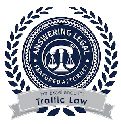Failure To Stop at a Stop or Yield Sign
Free Consultation
New York VTL § 1172 Failure to Stop at a Stop or Yield Sign Defense Lawyer
Have you been charged with VTL § 1172 failure to stop or yield in New York?
The New York State running a stop sign attorneys at Palumbo & Associates, P.C., have vast experience in representing drivers accused failure to stop at a stop sign, running a stop sign, or failure to yield the right of way, NY VTL § 1172. If you have been arrested or charged with failing to stop or yield, NY VTL § 1172, or running a stop sign, contact us for a free consultation to find out how we can help. Our New York traffic court defense lawyers and attorneys can represent you when charged with not stopping at a stop sign, or failure to yield at a yield or stop sign anywhere in New York State.
NY VTL § 1172 – the statute
Under NY VTL § 1172(a), a motorist must come to a full and complete stop at a stop sign at either:
- A clearly marked stop line, or
- Before entering the crosswalk, or if there is no crosswalk, then
- Before entering the intersection
- Under NY VTL § 1172(b), when approaching a yield sign the motorist must only stop “for safety,” and must do so at
- A clearly marked stop line, or
- Before entering the crosswalk, or if there is no crosswalk, then
- Before entering the intersection
- Whether the intersection is controlled by a stop or yield sign, the right to continue through the intersection is regulated by NY VTL § 1142. Under NY VTL § 1142, after having stopped or slowed at a yield sign, the motorist must yield the right of way to any vehicle which has already entered the intersection and must also yield the right of way to pedestrians. In addition, under NY VTL § 1175 a motorist cannot enter an intersection unless they can clear the entire intersection, i.e., not “block he box.”
NY VTL § 1173 – failure to stop from an alley, driveway, private road or building
Even when there is no actual stop or yield sign, driver’s emerging from driveways, private roads, buildings, and alleys, must nonetheless stop. This stop must be made prior to driving onto or across the sidewalk extending across the area where they are alighting from, and must also stop at the curb cut to the road at a point where the driver has view of the roadway before entering it.
Defenses to NY VTL § 1172 running a stop sign
When defending running a stop sign we often call into question the angle of observation of the police officer. Often times the officer failed to have a clear and unobstructed view of the offense, and this can lead to a dismissal or leverage for a favorable plea bargain agreement.
Indeed, when a car stops at a stop sign and an officer is perpendicular to the trajectory, this can create the illusion of failure to stop. This occurs when the angular, but not linear speed of the vehicle is measured; the vehicles rate of deceleration and acceleration is quick; and the time of observation is short and obstructed. For example, when one watches a train approaching from a distance it often appears to be not moving at all, and only as it approaches and passes us is the actual speed visually realized. Consequently, often times the officer observes the illusion of running a stop sign when in fact the motorist came to a complete stop.
When defending for failure to yield that is often a mere opinion of the officer. The officer alleges that you caused a “near miss,” but never does the other motorist come in to back up the claim. Developing such evidence and bringing out the police bias can lead to a dismissal.




Advance Legal
Medicaid Fraud Attorney
Estate Lawyer NY
Advance Legal Blogspot
Brooklyn Trust and Will
